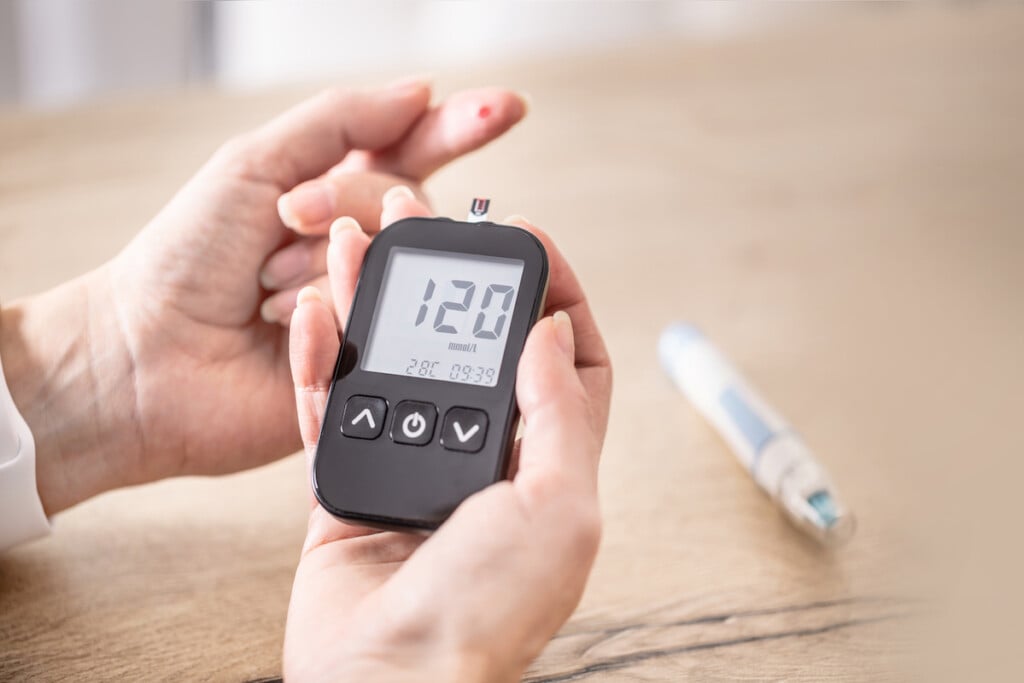The Truth About Diabetes
With proper care it can be managed successfully for many years, but left untreated it can kill.

Are you one of the Americans who have diabetes and don’t even know it? That’s more likely than you may think—according to the Centers for Disease Control and Prevention (CDC), there are 8.5 million such people. Key signs of the disease include persistent hunger and thirst and frequent urination. See your doctor or another healthcare provider for an evaluation if you’re unsure.
Diabetes, which affects how the body turns food into energy, is a treatable, manageable condition some 37.3 million U.S. citizens have— that’s about one in every nine. If left untreated, says the American Heart Association, it can lead to potentially fatal medical problems, including cardiovascular disease. The CDC lists diabetes as the nation’s eighth leading direct cause of death, but that understates its danger because of its underlying role as a contributor to deaths officially chalked up to heart disease, kidney disease and stroke. And almost 100 million Americans have prediabetes, with blood-sugar readings that suggest that they are at risk for the disease.
Recognizing risk factors and keeping up to date with regular screenings are key defenses against prediabetes and diabetes, says Ginine Cilenti, executive director of the Diabetes Foundation in Mahwah. To commemorate National Diabetes Month in November, BERGEN sought insights from Cilenti and Dima Yeshou, M.D., chief of endocrinology at Bergen New Bridge Medical Center.
Are you prediabetic?
In type 1 diabetes, once known as juvenile diabetes, the body can’t make the hormone insulin, which helps convert sugars from food consumed into energy. Type 2 diabetes typically (though not always) develops in adulthood. It’s marked by the body’s failure to use insulin properly. Without insulin, or when it isn’t used sufficiently, too much glucose remains in the blood. Prediabetes occurs when a person’s blood-sugar levels are higher than normal but not high enough to be classified as diabetes. Says Cilenti: “Prediabetes is often considered a warning sign or precursor to type 2 diabetes.” Folks should be wary of the risk factors, as physical symptoms of prediabetes (such as darkened skin on the neck, armpits and groin) usually don’t present themselves, Dr. Yeshou says. A person’s odds of becoming prediabetic increase if he or she has any of these factors: obesity, physical inactivity, a diet with large amounts of red and processed meats, high blood pressure, high levels of triglycerides, low levels of high-density lipoprotein cholesterol (HDL), or polycystic ovary syndrome.
“Being overweight is a primary risk factor for prediabetes,” Dr. Yeshou says. “The more fatty tissue you have, especially inside and between the muscle and skin around your abdomen, the more your cells become resistant to insulin. The risk of insulin resistance goes up for men with waists 40 inches and above and for women with waists larger than 35 inches.”
While there’s no clear indication why certain races and ethnic groups are more susceptible to prediabetes, Dr. Yeshou says the condition is more prevalent among the Black, Hispanic, Asian American and American Indian communities.
When to test?
If you’ve determined that you have one or more risk factors of prediabetes, it’s important to consult a physician for testing, including A1C screening, which measures average blood-sugar levels over the past three months. “Based on risk factors, a person should be screened if he or she is 45 or older, has a family history of diabetes, is overweight or physically inactive or has high blood pressure or high cholesterol,” Cilenti says.
Unlike prediabetes, type 2 diabetes does show common, recognizable symptoms. Dr. Yeshou advises that you should also contact your doctor if you are showing signs of type 2 diabetes. Besides heightened thirst and hunger and frequent urination, they include fatigue, blurred vision, numbness or tingling in the feet or hands, frequent infections, slow-healing sores and unintended weight loss.
How is diabetes treated?
Prediabetes can be treated and managed through a series of lifestyle changes. “Eating healthy foods, being physically active daily and staying at a healthy weight can help bring your blood sugar level back to normal,” Dr. Yeshou says. Medications, too, can be prescribed to control cholesterol, high blood pressure and body weight. “Progression from prediabetes to type 2 diabetes isn’t inevitable.”
Type 1 diabetes patients and a minority of those with type 2 take insulin to regulate their blood sugar. Insulin is added to the body using a needle and syringe, insulin pen, or insulin pump. Inhalers and insulin jet injectors are less common ways to take insulin.
“Diabetes is a progressive disease,” Dr. Yeshou explains. “And over time, even if you are doing all you can to stay healthy, you may need medicine to keep your blood sugar within your target range.”
4 MYTHS—BUSTED
Diabetes is one of those conditions we all think we understand, but sometimes that understanding is flawed. Below, Ginine Cilenti, executive director of the Diabetes Foundation in Mahwah, and Dima Yeshou, M.D., chief of endocrinology at Bergen New Bridge Medical Center, debunk four common but erroneous notions about the condition.
Myth: Diabetes is not a serious disease.
Fact: “Diabetes causes more deaths a year than breast cancer and AIDS combined,” says Cilenti. “If not managed properly, it can lead to severe complications such as heart disease, stroke, kidney disease and blindness.”
Myth: Only overweight people get diabetes.
Fact: “While it’s true that being overweight is a risk factor for type 2 diabetes, people of all sizes can develop the condition,” Cilenti says. “Many people with type 2 diabetes are at a normal weight or only moderately overweight.”
Myth: People with diabetes can never eat sweets.
Fact: “You don’t need to cut sugar totally from your diet if you have diabetes,” says Dr. Yeshou. “You just need to be aware of its impact on your blood sugar and health and use moderation, following the guidelines given to you by your provider.”
Myth: People with diabetes have to eat a special diet.
You don’t need special food, according to the American Diabetes Association. In fact, the organization says many foods with “diabetes-friendly” claims may still raise blood glucose levels and can contain sugar alcohol levels that can have a laxative effect. “Understanding how foods affect you and what foods are better choices for your condition is part of managing your diabetes,” says Dr. Yeshou. Like any healthy eating plan, consider non-starchy vegetables, whole grains and a limited amount of highly processed foods.
Myth: It’s not safe to exercise with diabetes.
Fact: “While you should always consult your provider before starting or changing an exercise routine generally, exercise and daily activity are beneficial to those with diabetes,” says Dr. Yeshou.

